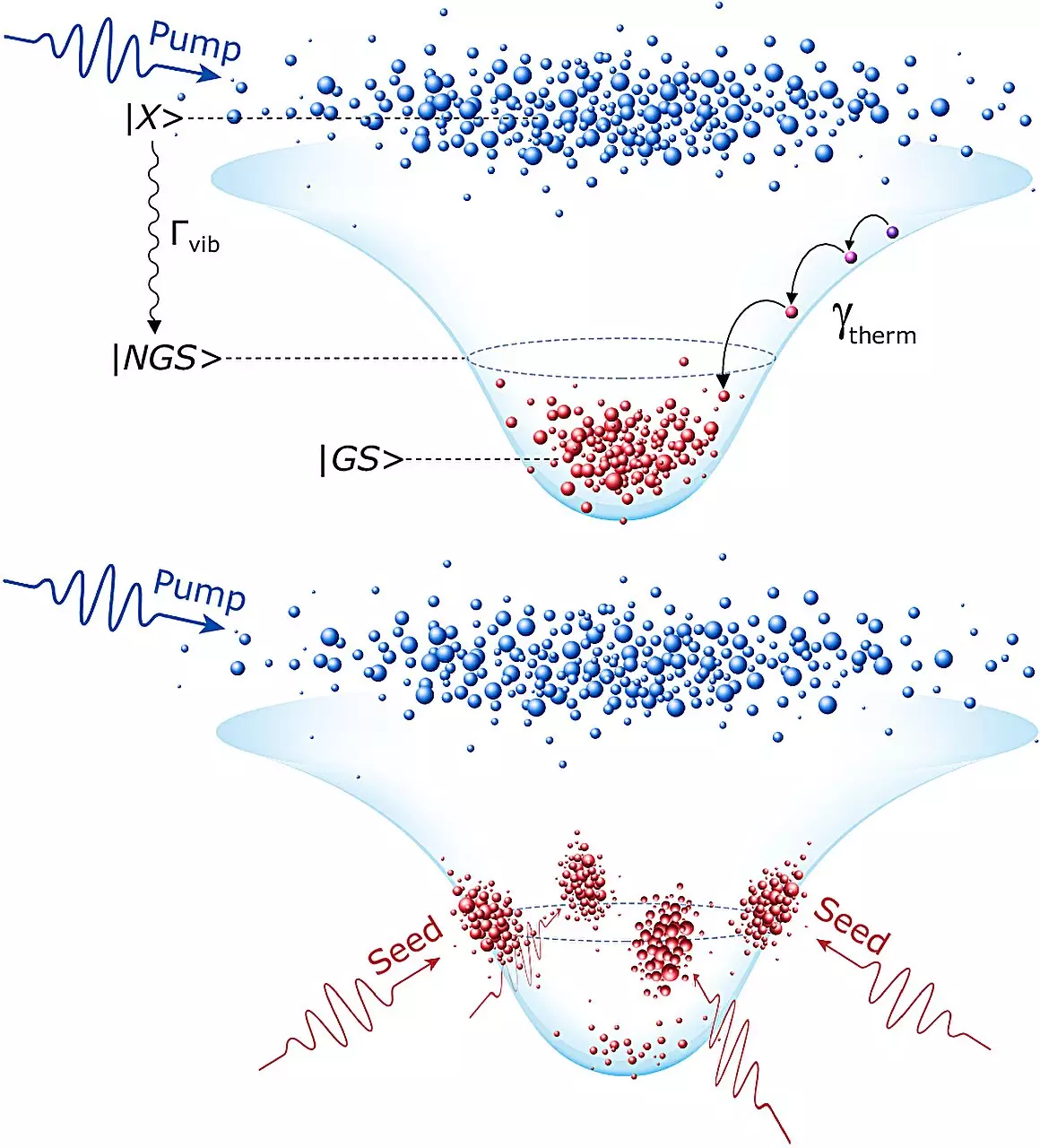In a significant leap towards what could redefine computing paradigms, researchers from Skoltech and Bergische Universität Wuppertal have unveiled a remarkable innovation: a universal NOR logical element driven by polariton condensates. This breakthrough, which operates efficiently at room temperature, illustrates a radical departure from traditional electronics. The creation of this optical logic gate signals a potentially game-changing shift to optical computing, enabling functionalities that are not only faster but also more efficient than existing electronic systems. As the need for advanced computing solutions intensifies, this discovery may set the stage for a new era dominated by optical technologies.
Breaking Through the Speed Barrier
The inherent limitations of electronic processors, traditionally constrained to operate within a few gigahertz, have been a persistent bottleneck for computational speed. In contrast, the newly developed optical logic gate boasts an impressive capacity to function at frequencies reaching up to 1 terahertz—approximately 300 times faster than traditional electronic counterparts. This capability could revolutionize how calculations are performed, particularly in fields such as data processing and artificial intelligence, where speed and efficiency are paramount. The development of this technology could ease the long-standing struggle to increase processor speeds without encountering detrimental heat production, a challenge that has haunted engineers for decades.
Understanding Polariton Condensates
Central to this advancement is the unique behavior of polariton condensates, often referred to as “liquid light.” These quasi-particles merge the properties of photons and excitons, allowing them to amplify weak optical signals with unmatched efficacy. The research team has successfully developed methods to achieve condensations in both the ground and excited states, leading to innovative applications for logic operations. By leveraging the properties of these condensates, the Skoltech team has managed to create an optical logic element capable of functioning with multiple inputs—12 to be precise—in a way that significantly enhances the versatility of optical circuits compared to their electronic analogs, which typically accommodate fewer inputs.
The Cascading Effect: A Pathway to Complex Computations
A critical feature of this breakthrough is the ability to cascade logic elements, enabling the creation of complex circuits akin to those found in modern electronic computers. By establishing interconnected cascaded optical gates, the potential for constructing elaborate optical chips increases exponentially. Such architectures could facilitate the execution of complex calculations without employing electric currents, setting the stage for computations that are remarkably more efficient in energy use. This cascading functionality not only augments processing capabilities but also reshapes our understanding of how logical computations can be structured in future applications.
The Promise of an Optical Future
While the results of this research are promising, the path to widespread adoption of optical computing is fraught with challenges that must be addressed. The technical complexities of manufacturing optical components that can seamlessly integrate with existing infrastructures pose significant obstacles. Moreover, the development of a framework that can effectively harness and streamline these optical signals into coherent computing functionality remains a priority for future investigations. However, with demonstrations of precise control over optical polariton transistors—where a single photon can govern operations—scientists are one step closer to overcoming these hurdles.
A Glimpse into Tomorrow’s Technology
The implications of this research stretch far beyond the realm of logic gates. The potential for entirely optical computing systems could lead to transformative impacts across numerous industries, from telecommunications to quantum computing. Embracing optical signals not only promises increased processing speeds but also heralds a future where energy efficiency becomes a cornerstone of computation. As researchers continue to refine these technologies, the dream of harnessing the speed and power of light for practical applications becomes increasingly attainable.
The groundbreaking work at Skoltech and Bergische Universität Wuppertal represents a pivotal moment in the evolution of computing, suggesting a transition from our current electronic dominion towards a future where optics reign supreme. This innovation serves as a clarion call for both the scientific community and industry stakeholders to invest in optical technologies that could potentially transcend the limitations of today’s computing solutions.

